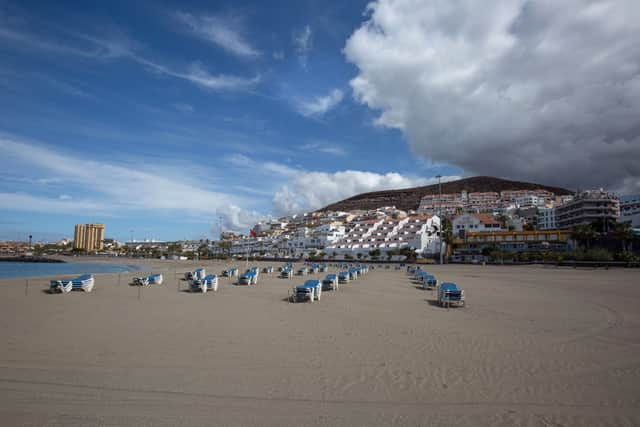The Canary Islands: Travel warning as 'seismic swarm' hits Tenerife while island prepares for possible volcano eruption
and live on Freeview channel 276
A Tenerife travel warning has been issued as a “seismic swarm” has hit the popular holiday destination the Canary Islands. The “seismic swarm” warning has come as dozens of small earthquakes with 26 in the southwest sector of the Las Cañadas del Teide crater, the island's largest volcano, have been detected.
The volcano is sparking a risk to travel. Tenerife has not seen major volcanic activity since 1909 which lasted for ten days.
Advertisement
Hide AdAdvertisement
Hide AdThe increase in seismicity is believed to be due to a pressurisation process within the volcanic-hydrothermal system, likely linked to the injection of magmatic gases into the system. The Volcanological Institute of the Canary Islands (Involcan) stressed that this seismic activity does not pose any danger to the population and does not indicate a change in the probability of a volcanic eruption occurring in Tenerife in the short to medium term.


The activity was recorded between 1:42am and 6:08am on Tuesday (28 May), according to the volcanological institute's report. The earthquakes were registered at depths ranging from five to 10 kilometres, but the biggest recorded magnitude of these tremors was only 1.2 on the Richter scale.
Since June 2017 Tenerife has seen a steady rise in microseismic activity, according to Involcan. Mount Teide is the third highest and most voluminous volcanic structure in the world, following Mauna Loa and Mauna Kea in Hawaii. The formation began 170,000 years ago following the giant collapse of the former volcanic edifice, which was even bigger than the one that stands today. That is how Las Cañadas caldera was formed.
Comment Guidelines
National World encourages reader discussion on our stories. User feedback, insights and back-and-forth exchanges add a rich layer of context to reporting. Please review our Community Guidelines before commenting.
